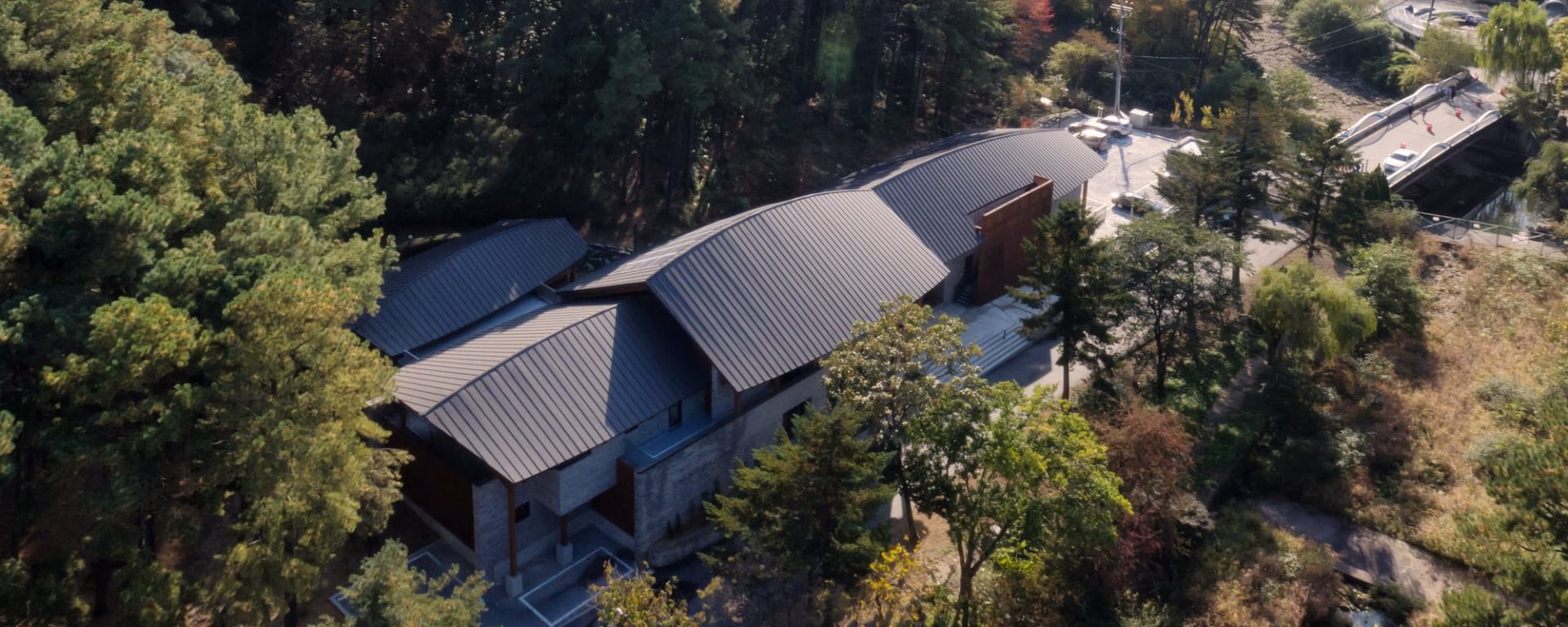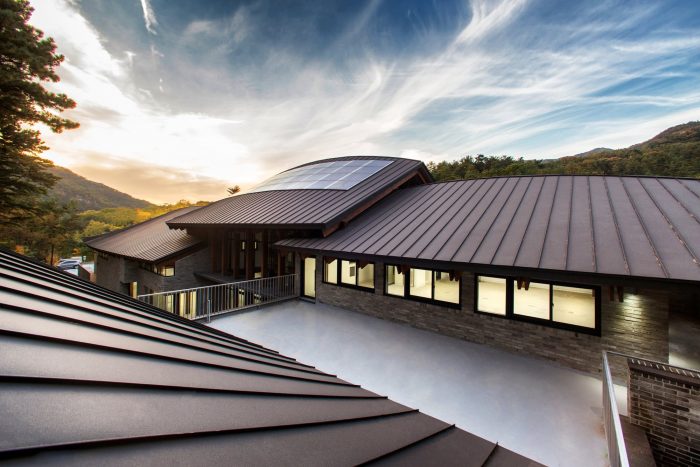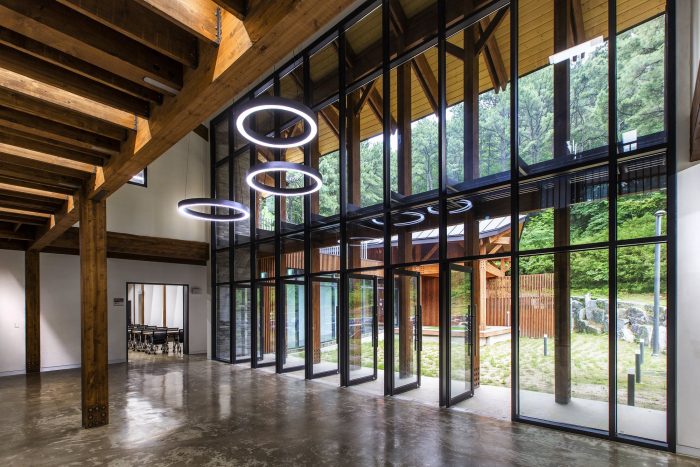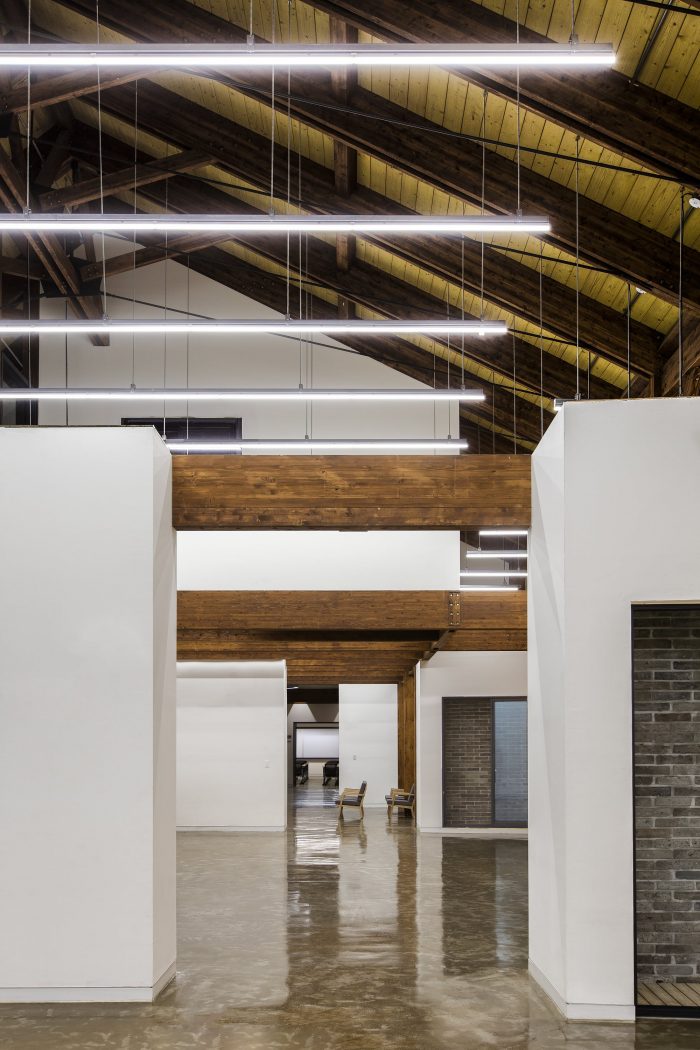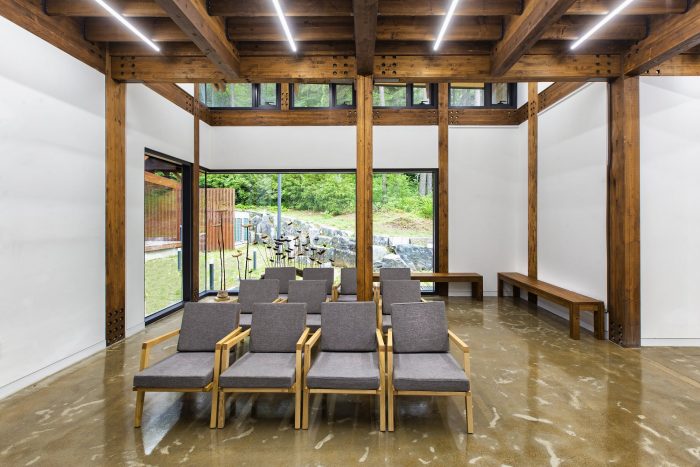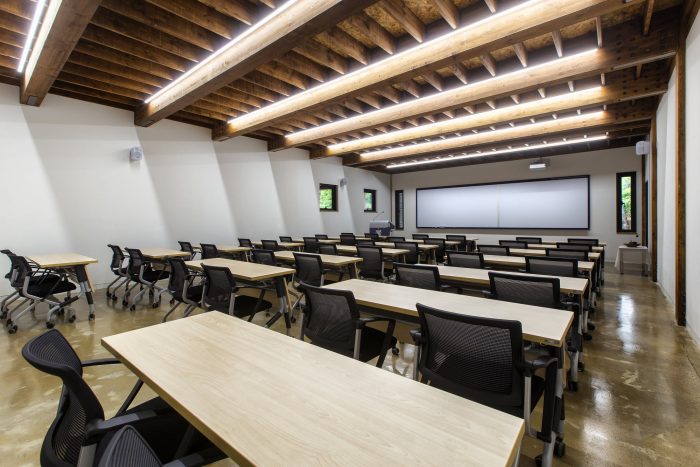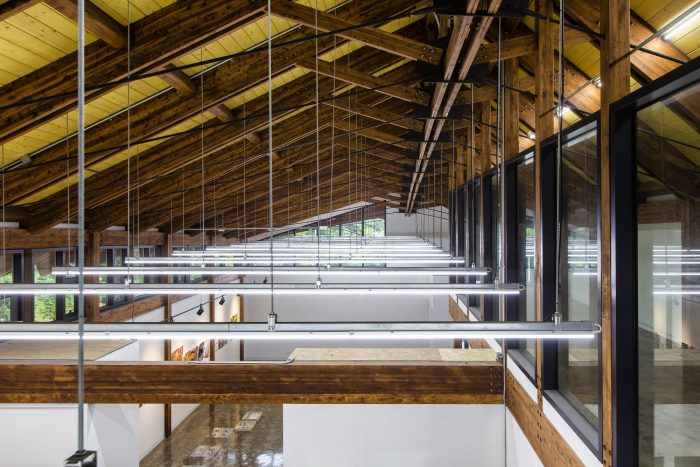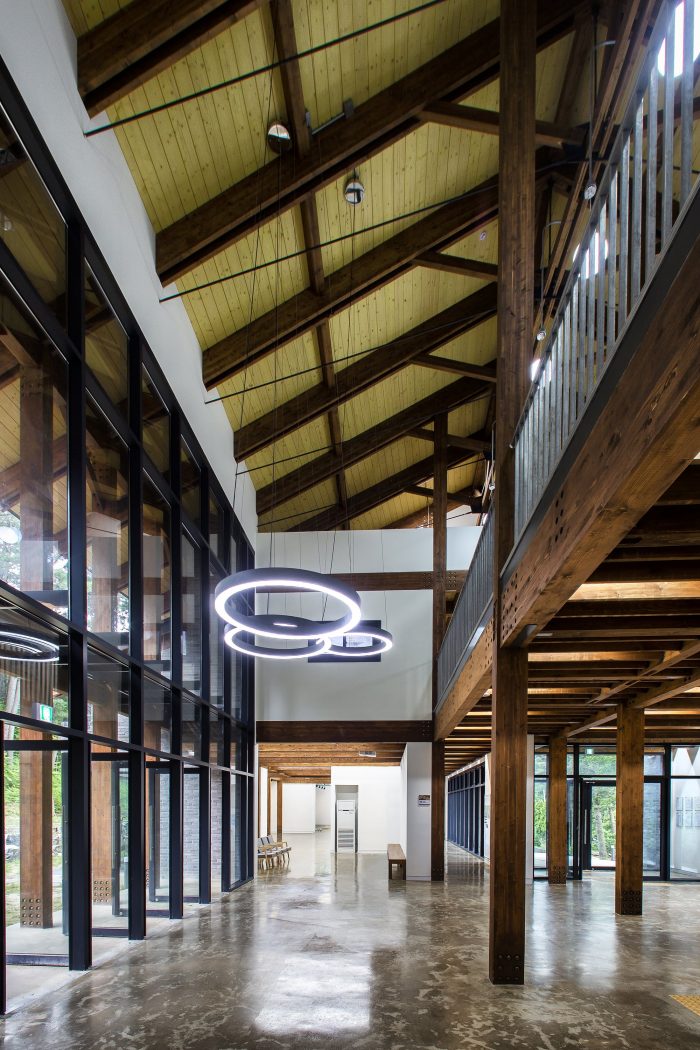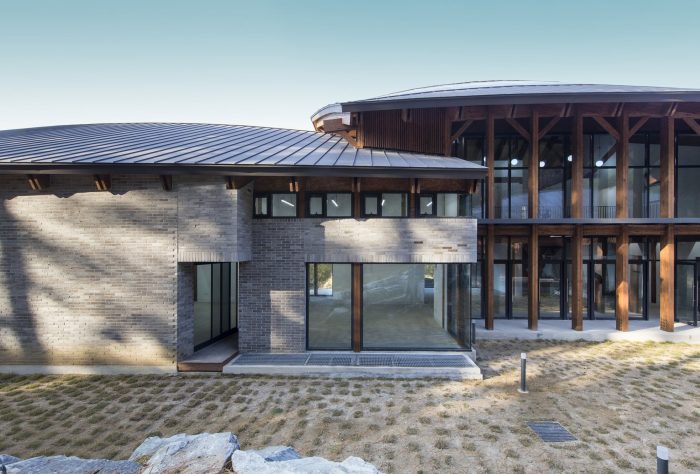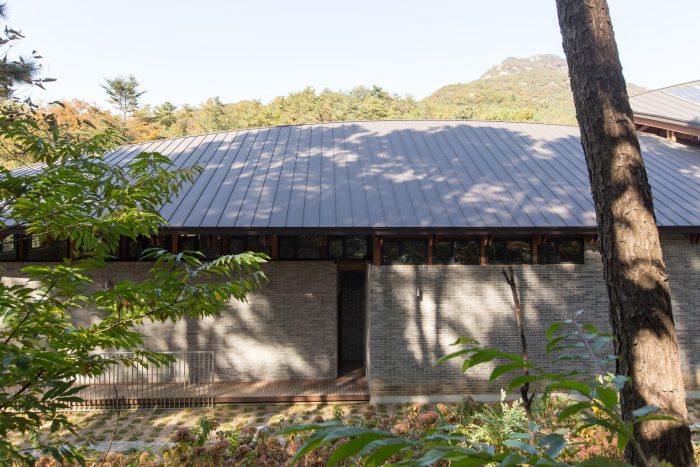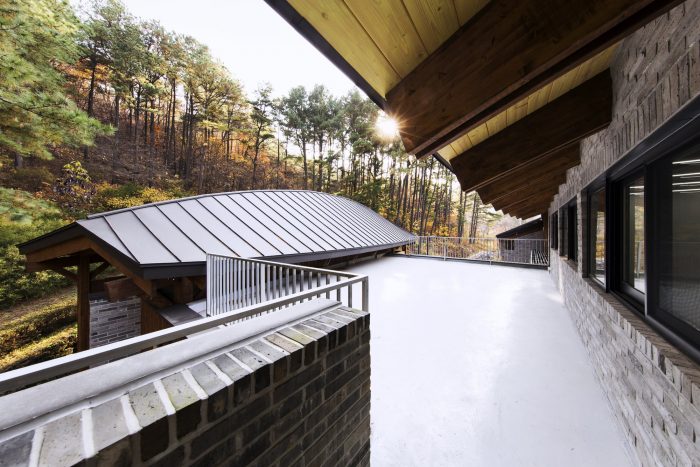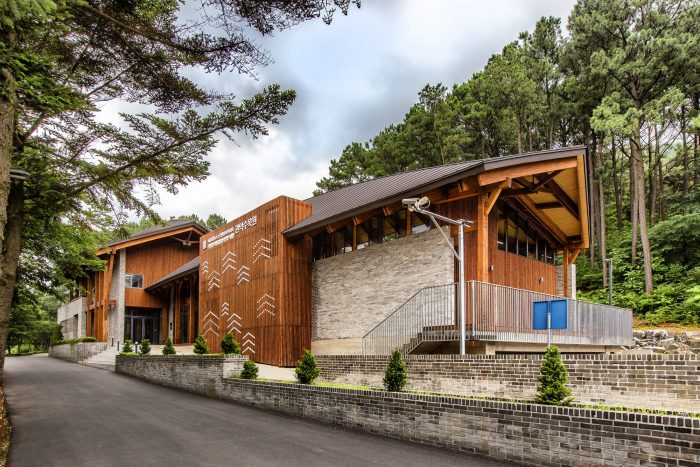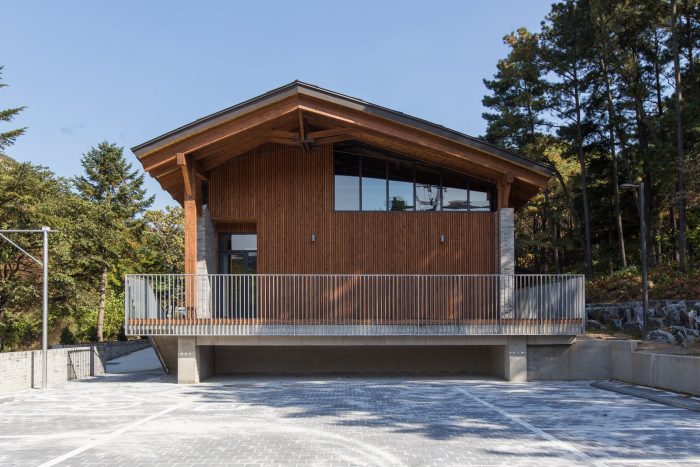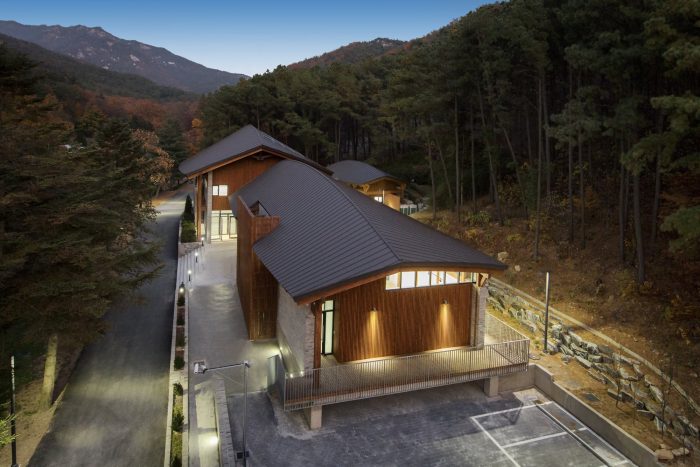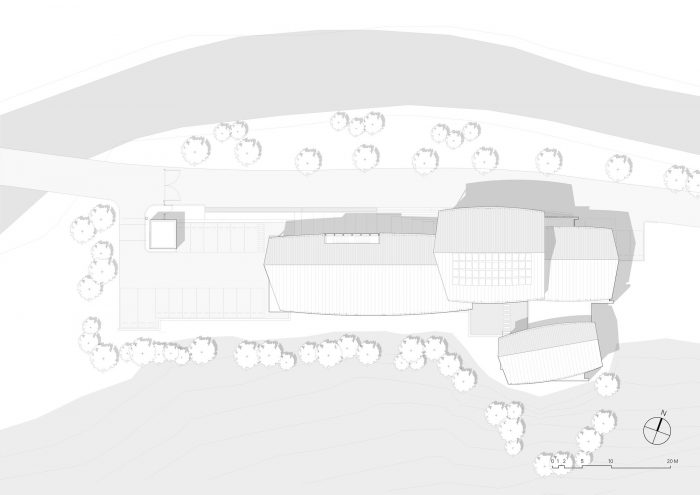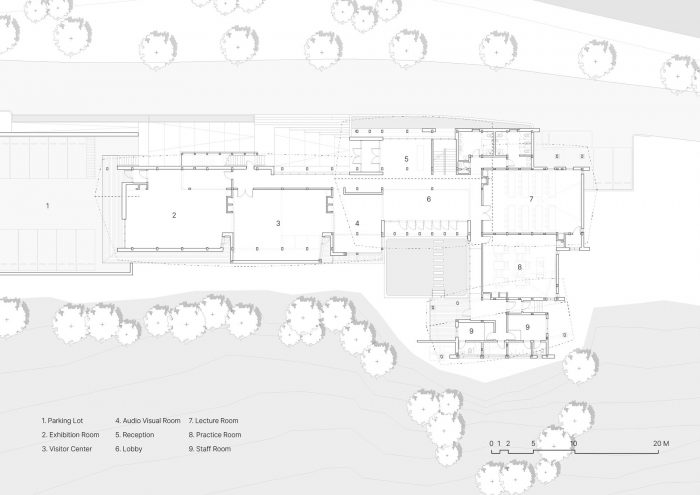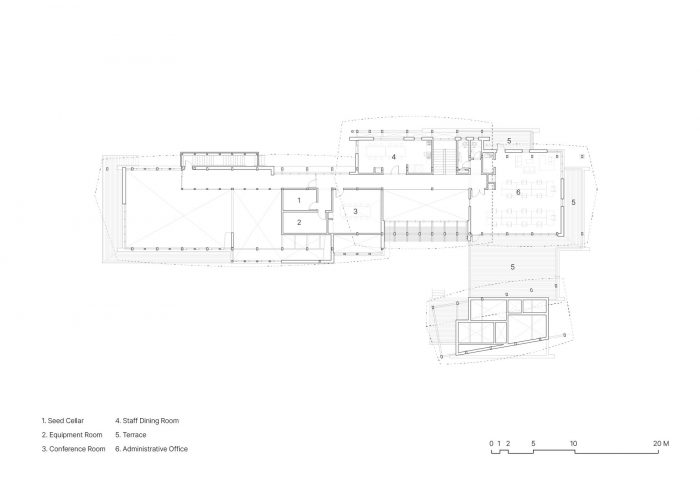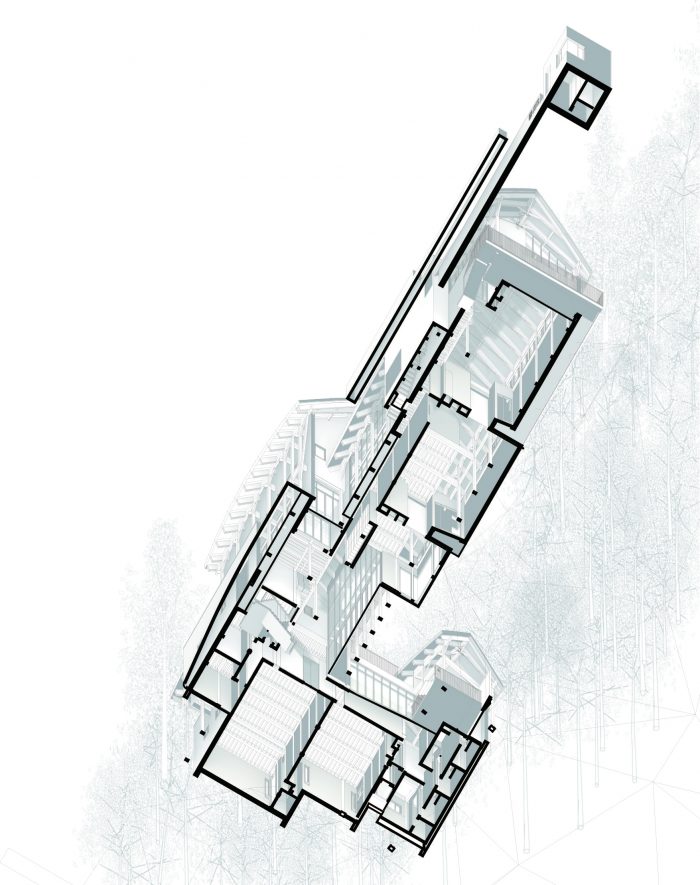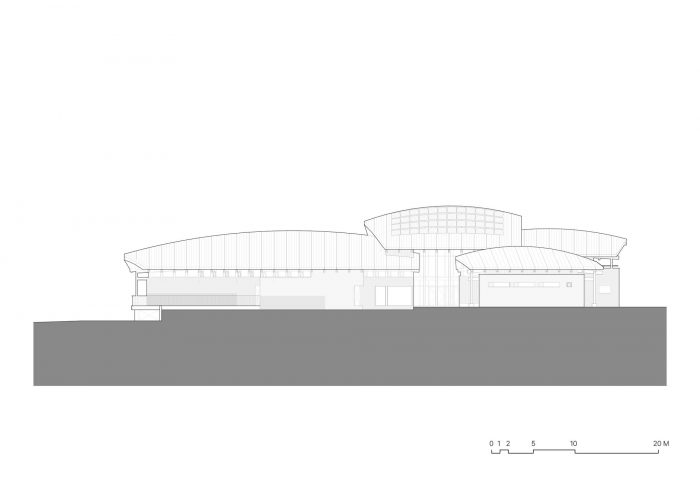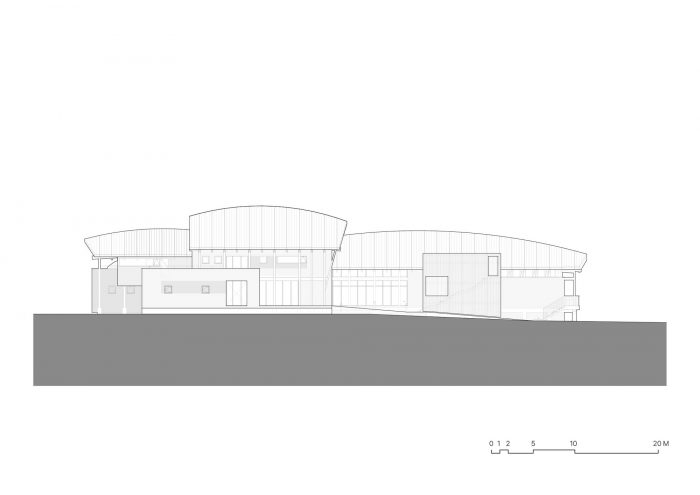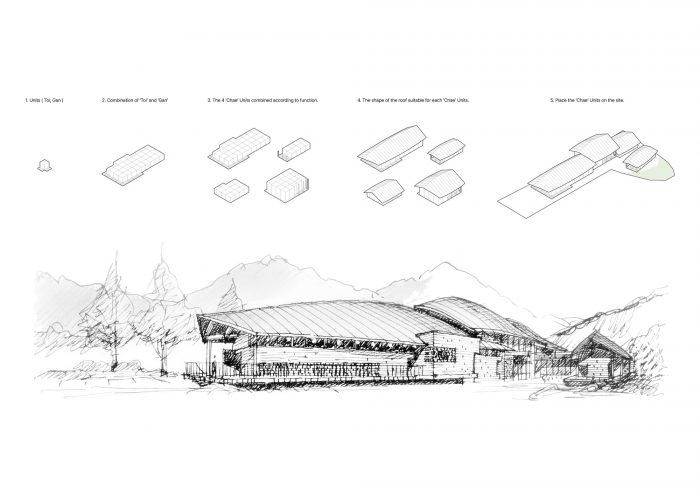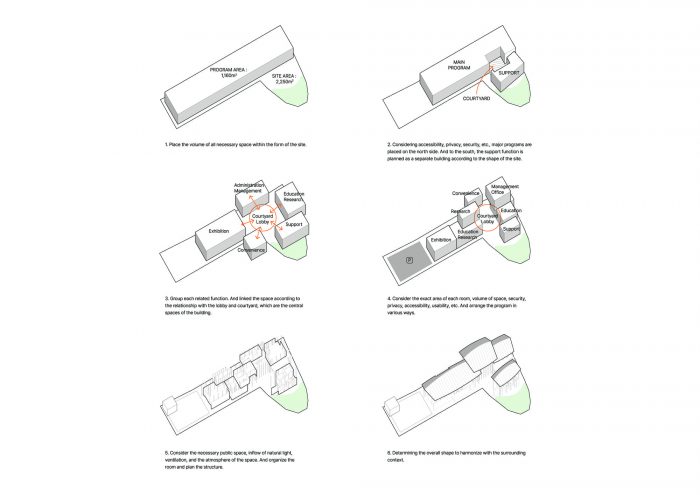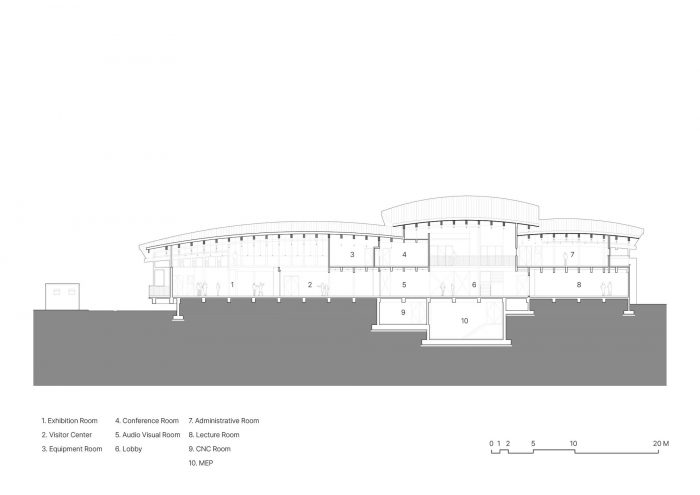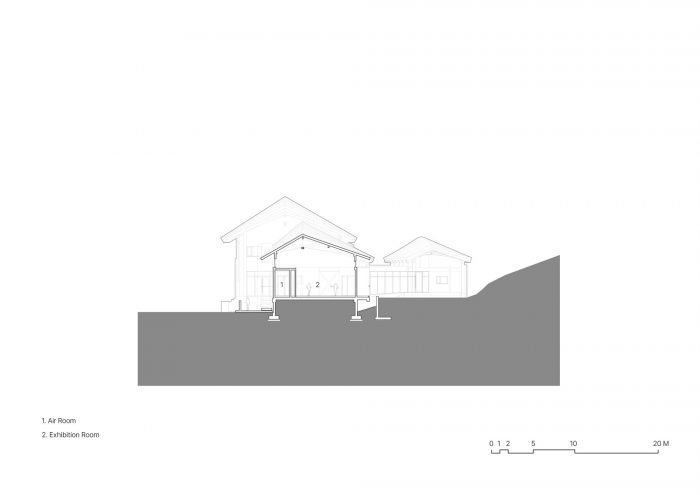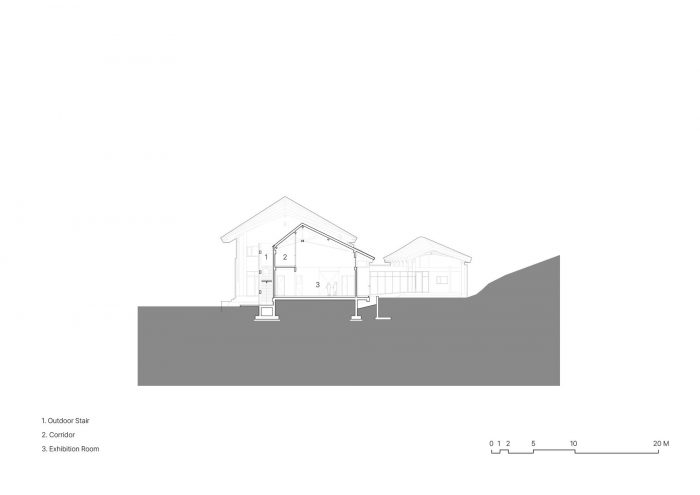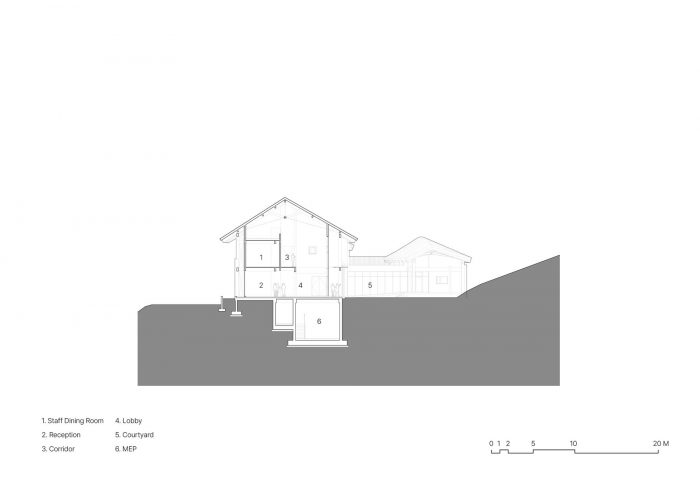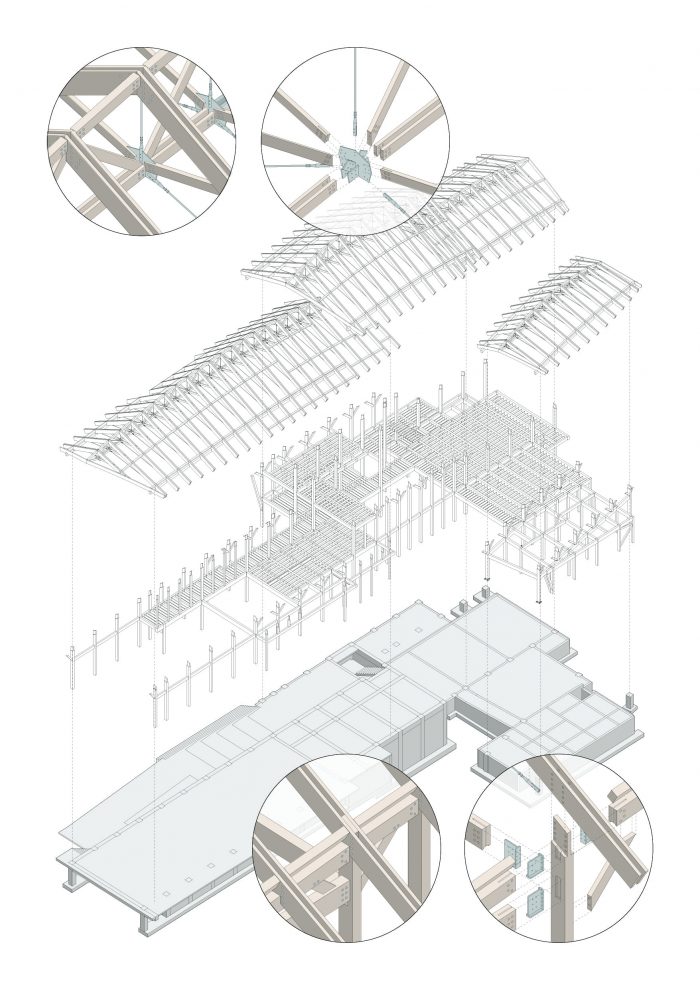作为空间的建筑,作为产品的建筑 – 对 “执行建筑 “有两种主要的态度:把建筑作为空间来设计和把建筑作为产品来设计。许多建筑师和学校的工作室都强调’作为空间的建筑’。以谚语 “碗的用途在它的空隙 “为例,他们倾向于诋毁形态主义和功能主义建筑,而支持 “通常难以定义的场所和氛围感”。然而,这两种态度并不优越,相反,或不相容。那些把建筑说成是空间的人把他们的重量放在历史、记忆、传统、背景、地点等方面,而那些把建筑设计成产品的人则集中于功能、性能、形式、材料、技术、构造和细节。前者的建筑通常通过透视画,以及建筑师的手绘草图来研究,而后者通常通过鸟瞰图、等值线和爆炸图来表达。当然,前者对敏感性和艺术性更感兴趣,而后者对理性、技术和科学更感兴趣。
Architecture as Space, Architecture as Product – There are two major attitudes towards ‘executing architecture’: designing architecture as space and designing architecture as a product. Many architects and studios in the schools emphasize ‘architecture as space’. Taking the proverb, ‘the use of the bowl is in its void’, for example, they tend to denigrate morphism and functionalist architecture in favor of a ‘sense of place and atmosphere that is often difficult to define. However, these two attitudes are not superior, opposite, or incompatible. Those who speak of architecture as space place their weight on history, memory, tradition, context, place, and so on, and those who design architecture as a product concentrate on function, performance, form, material, technology, tectonics, and details. The architecture of the former is usually studied through perspective drawings, and the hand sketches of the architect, and the latter is usually expressed through bird’s-eye views, isometrics, and exploded drawings. Of course, the former is more interested in sensitivity and the artistic, and the latter is more interested in reason, technology, and the scientific.
在整个现代建筑师的时代,人们对新机器和资本主义的进步充满了热情,而现在韩国的建筑似乎在谈论空间,但是,它往往集中在产品或商品上。著名建筑杂志上的现代风格建筑也在吹嘘各自背后的概念,但这就像在商店陈列的iPhone、Galaxy、华为或小米手机,作为不同的品牌。谈到商业化,要做到与众不同并不容易,因为它们被要求是时尚的,设计和建造的速度越来越快,施工时要以最小的成本达到最大的性能。瓜纳克植物园教育管理大楼设计时的情况是:没有客户,设计周期短,建筑预算不足,由于公共采购局的盲目招标,承包商的选择很复杂,与上述情况没有区别。在这个建筑的设计阶段产生的最大想法是,建筑不应该只偏向于创造一个空间或一个产品。因此,为了将建筑设计成一种空间体验,我们采用了对韩国传统建筑的重新解释,并使用了数字设计和制造来应对建筑作为产品的感觉。
Throughout the era of modern architects, there was an enthusiasm for new machinery and the advancement of capitalism, whereas now Korean architecture seems to talk about space but, it is often focused on the product or commodity. The modern-style buildings in a prestigious architecture magazine also boast the concept behind each, but this is like an iPhone, Galaxy, Huawei, or Xiaomi phone displayed in a store showcase as different brands. When it comes to commercialization, it is not easy to be distinctive because they are required to be fashionable, designed and built at a faster and faster pace, and constructed to achieve maximum performance at minimum cost. The situation at the time of designing the Gwanak Arboretum Education & Management Building constituted of a client-less, short design period, an insufficient construction budget, and the complicated selection of the contractor was hard to figure out due to the blind bid by Public Procurement Service, which was not different from that stated above. The biggest idea that arose during the design phase of this building was that it should not be architecture that is biased towards only the creation of either a space or a product. Therefore, in order to devise architecture as a spatial experience, the reinterpretation of Korean traditional architecture was adopted, and digital design and fabrication were used to cope with the sense of architecture as a product.
建筑艺术–作为一种历史记录,建筑不仅应该参与到当时的主流文化中去,也应该认同先进的技术。在建筑的实现过程中,通常会用到两种技术:设计技术和施工技术。建筑师在选择设计技术时应考虑到施工技术。最近,在建筑生产方面,越来越多地要求最大限度地使用工厂制造,同时尽量减少 “建筑即产品 “的现场施工。由于瓜纳克植物园教育和管理大楼位于树木茂盛的山区,而不是在城市背景下,因此从一开始就考虑到了精益施工,即尽量减少现场施工,这也是重要因素之一。为此,他们没有采用需要大量现场施工设备的钢筋混凝土结构,而是采用了木材结构,这也是符合研究和培育植物和树木的建筑地位的必然决定。
The Art of Architecture – As a historical record, architecture should not only partake in the mainstream culture of its time but also identify with advanced technology. Two kinds of technology are usually used in the realization of a building: design technology and construction technology. Architects should select design technologies with construction technologies in mind. More recently, in terms of architectural production, the maximum amount of factory fabrication is increasingly required along with the minimum amount of on-site construction for ‘architecture as product’. Since the Gwanak Arboretum Education & Management Building was in a heavily wooded mountain area, rather than in an urban context, lean construction, which minimizes on-site construction, was considered one of the important factors from the beginning. For this purpose, instead of a reinforced concrete structure, which requires a lot of construction equipment on the field, they adopted a lumber structure, which was the inevitable decision to match the status of a building for the study and cultivation of plants and trees.
在设计这个木材结构建筑时,必须执行大量的成型研究,以实现类似于瓜纳克山山脊的自然弯曲的屋顶线。我们使用了带有Grasshopper插件的参数化设计建模技术,主要是因为只用二维图纸和实物模型来研究由各种类型和尺寸的元素组成的非典型形状的木材结构建筑几乎是不可能的。对于四层楼的结构,大约有40个变量被分配给每个屋顶,通过在短时间内改变它们的值,测试了数百个屋顶。此外,我们开发了一种逻辑,一旦屋顶的形状被确定,就会自动生成结构框架、其连接细节和元素列表。在设计阶段,不仅设计工作,而且施工所需的各种其他事项都通过虚拟模拟提前确定,这样就有可能减少大量的试验和错误、生产时间和成本。这表明我们已经达到了虚拟世界和现实互动的程度,并且可以在这个建筑的设计过程中得到体现。
In designing this lumber structure building, numerous formative studies had to be executed to realize the natural curved roof line resembling the Gwanak Mountain ridge. We used a parametric design modeling technique with a Grasshopper plug-in, primarily because it is almost impossible to study an atypically shaped lumber structure building consisting of various types and sizes of elements only with 2D drawings and physical models. For the four-roof structure, approximately 40 variables were assigned to each roof, and hundreds of roofs were tested by varying their values over a short period of time. In addition, we developed the logic that automatically generates the structural frame, its connective detailing, and a list of elements as soon as the shape of the roof has been determined. At the design stage, not only the design work but also various other matters required for construction were determined in advance through virtual simulations, so that it would be possible to reduce a significant amount of trial and error, production time, and cost. This shows how we have reached a point in which the virtual world and reality interact and can be reflected in the design process of this building.
一个无限的二元性。单位和场–设计建筑的另一个核心思想是 “单位 “和 “场 “的概念。单元是一个物理和形而上学的元素,就像一个量子或粒子,它构成了微观世界,但在这里发生在单个建筑作品被拆解的时候。另一方面,场指的是一个大概念,包括建立宏观世界的关系、整体形成和全球几何。前者与网格、单元、一个元素和单元空间有关,后者对应的是一个理想、一个符号、一个叙事和一个背景。你可以从一个单元开始,填充一个空间来建立一个系统。相反,你可以先决定一个巨大的关系框架,然后用小单元来填充它。这就是现代物理学在思考和反思宇宙的结构和生命的意义时所揭示的内容。
An Infinite Duality: Unit & Field – Another central idea of designing the building was the concept of the ‘Unit’ and ‘Field’. A unit is a physical and metaphysical element, like a quantum or particle, that constitutes the micro world, but in this context occurs when an individual work of architecture is disassembled. On the other hand, the field refers to a big idea, including the relationship, holistic formation, and global geometry that establishes a macro world. The former is associated with the grid, the unit, an element, and unit space, and the latter corresponds to an ideal, a symbol, a narrative, and a context. You can start with a unit and populate a space to build a system. On the contrary, you can decide upon a huge relational framework first and fill it with small units. This is what modern physics has revealed when pondering and reflecting upon the structure of the universe and the meaning of life.
为了创造一个与观岳山的韩国特色更加和谐的建筑,我们借用了韩国传统建筑中的空间构成–位于类似环境中的寺庙或书院。观岳植物园教育管理大楼从一个被称为 “toi “的空间组成单元开始,”kan “由木材结构单元的成员制作。这些单元被聚集起来形成’che’,而’che’是如何积累起来形成建筑的,通过与’单元’和’场’的概念产生共鸣,这种策略可以很容易地适应当地环境。完成后,这种方法暴露了许多局限性,虽然没有完全像上面写的那样揭示出来,但SNU Gwanak树木园教育和管理大楼正试图成为我们时代更多负面因素的结束或开始,就像卡夫卡的话语投射到一个严酷的韩国情况中。它努力体现世界的普遍性,并进一步体现宇宙的普遍性,因为它是一个继承了传统意识的空间,但它也是一个根据设计和建筑技术的新发展而制作的现代产品。
In order to create an architecture that is more harmonious with the very Korean nature of Gwanak Mountain, we borrowed a spatial composition from traditional Korean architecture – a temple or seowon – located in a similar environment. The Gwanak Arboretum Education & Management Building begins with a unit of spatial composition called a ‘toi’, ‘kan’ made by the members of the lumber structure unit. These units are gathered to form ‘che’, and how ‘che’ accumulate to make a building is a strategy that can be easily adapted to a local context by resonating with the concept of the ‘Unit’ and ‘Field’. After completion, this approach exposes a great many limitations for several reasons, and although it is not revealed exactly as it is written above, the SNU Gwanak Arboretum Education & Management Building is trying to be an end to or the beginning of the more negative aspects of our epoch, like the word of Kafka projected into a harsh Korean situation. It is an effort to embody the universality of the world, and furthermore the universe, as it is a space that has inherited a sense of tradition, but it is also a modern product made according to new developments in design and construction technology.
Architects: TAAL Architects
Area : 351 m²
Year : 2017
Photographs :Kim Jeonghyun
Lead Architects : Seo Jiyoung, Zo Hangman
Partner Designer : Im Jonghoon
Collaborating Architects : bi.WON Architects
City : Anyang
Country : South Korea

